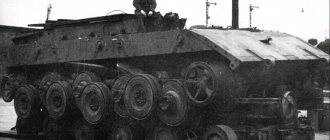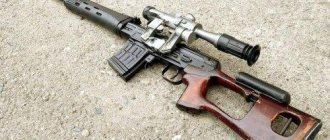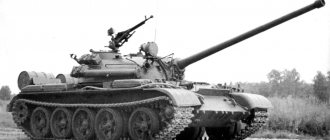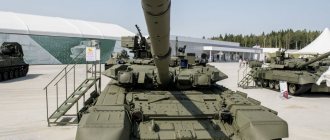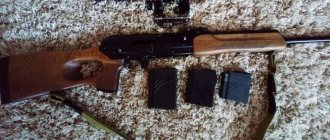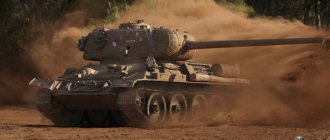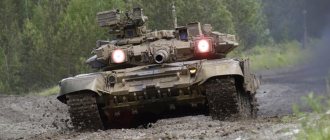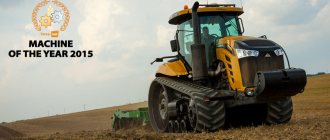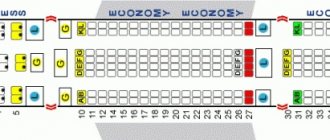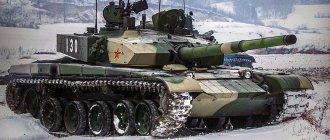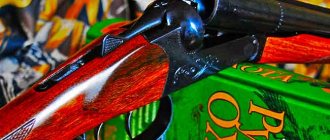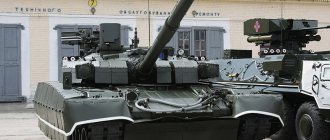Existing tiger species
Amur or Siberian tigers
photo: Joeke Pieters
Amur tigers (Panthera tigris altaica) can reach almost 3.3 meters in length. The weight of males is up to 300 kg, and they are larger than females. This subspecies of tiger has a skull that is much larger than other species. The color of the Amur tiger is paler in winter, and with the arrival of the warm season it becomes brighter and more saturated. The fur is thicker and coarser than that of other tiger species due to the low temperature of the range where it lives. Amur tigers are capable of knocking down animals that weigh several times more than them. They tend to hunt elk and wild boar.
Bengal tigers
The Bengal tiger (lat. Panthera tigris tigris or Panthera tigris bengalensis) can be seen in India. It is the most numerous of all tiger species with over 2,500 individuals in the wild. This tiger species can weigh around 230 kg for an adult male and 140 kg for a female. Bengal tigers also have very long tails and heads that are larger than other species. They are excellent hunters and feed on a wide range of prey, including deer, antelope, pigs and buffalo. Also, during times of shortage of basic food, they hunt monkeys, birds and other smaller prey.
Indochinese tigers
The species of tiger known as the Indochinese tiger (Panthera tigris corbetti) is found in several Asian countries. The species is darker in color and smaller in size than Bengal tigers, but they are capable of reaching a maximum weight of 200 kg for males and 150 kg for females. Indochinese tigers prefer to live in forested areas. There are not many such tigers anymore. The government estimates the species' population to be only 350 individuals. Indochinese tigers are suffering from food shortages as wild pig and deer numbers are also declining.
Malayan tigers
The Malayan tiger (Panthera tigris jacksoni) can only be found in the south of the Malay Peninsula. This tiger was only recognized as a separate species in 2004. It is the smallest species on the mainland and the second smallest tiger species. Males weigh on average 120 kg, and females about 100 kg. Note that the Malayan tiger has cultural significance as it is on the country's coat of arms and is also the logo of Maybank, a Malaysian bank.
Sumatran tigers
photo: Hagen Schneider
Sumatran tigers (lat. Panthera tigris sumatrae) are a very rare species that lives only on the island of Sumatra. Habitat destruction is still considered the main threat to the Sumatran tiger. The Sumatran tiger's stripes are closer together than other tigers. This allows him to be invisible in tall grass. One of the Sumatran tiger's best tactics is to stalk its prey in the water. It is an extremely fast swimmer, so it is easily able to intercept larger prey in the water that it would not be able to handle on land.
Chinese tigers
Chinese tigers (lat. Panthera tigris amoyensis) are most at risk of extinction. This tiger species is often listed among the ten most endangered species in the world. In the early 1950s, the Chinese tiger population was estimated to number 4,000. And already in 1996, only 30-80 of these unique animals remained.
Equipment
A medium caliber rammer will speed up the already fast reload time. The vertical stabilizer will allow you to hit more often while moving, and improved ventilation will improve the performance of the entire crew by 5%.
This combination indicates a significant improvement in firepower.
As an alternative, you can install the following modules:
By replacing improved ventilation with coated optics, the player will improve the tank's viewing radius, which is already considered its advantage. You can replace the vertical stabilizer with improved ventilation. The tank will shoot worse while moving, but all the characteristics of the crew will improve slightly.
Extinct tiger species
Bali tigers
Some species of tigers are extinct, among them is the Balinese species of tigers (lat. Panthera tigris balica) . As the name suggests, the range of this tiger species was limited to the island of Bali, Indonesia. Before its extinction, the Bali tiger was the smallest tiger species. This species is still considered important in Balinese Hinduism.
Caspian tigers
The Caspian tiger (lat . Panthera tigris virgata), also known as the Transcaucasian tiger, used to be found in sparse forests. It was discovered in the south and west of the Caspian Sea. At least, it was still found in the wild until the early 1970s. The closest living species to the Caspian tiger is the Amur tiger.
Well, the tank also has excellent dynamics and excellent speed data
The main advantages of Tiger 1 are:
• reliable weapon; • excellent strength; • excellent mobility; • good review.
The disadvantages of the machine can be considered:
• thin armor; • uncomfortable shape; • high level of damage to parts.
You can enhance the advantages of the machine with the help of proper selection of equipment. Good components raise the vehicle's DPM, improve its parameters and expand visibility; the potential of the guns can be increased with the help of optics.
Liger
Liger is a hybrid that is the result of mating between a male lion and a tigress. The lion contributes a gene that promotes growth, because of this, ligers can grow much larger than their parents and have a length of 3-3.5 m, and a weight of 360 kg to 450 kg or even more. They do, however, reflect the appearance and behavior of both parents. As a result, the liger has spots and stripes imprinted on its sandy fur. Male ligers have a 50% chance of growing a mane, just not as luxurious as a lion's. While the resulting liger is certainly beautiful and interesting to study, the males of this hybrid are sterile, even when their females are usually fertile.
On the Topic: 18 ANIMAL HYBRIDS YOU'VE NEVER SEEN
Tigon
The tigon , which is the result of breeding between a male tiger and a lioness, is a less common hybrid. Naturally, tiger hybrids cannot; they are found in the wild and can only be seen in zoos or circuses. Tigons are usually no larger than average in size.
Crew skills
Before upgrading the crew's perks, you need to study the strengths and weaknesses of the tank. Recommended skills that need to be upgraded step by step for the crew:
| commander |
| gunner |
| driver mechanic |
| radio operator |
| charging |
Since this is a heavy tank, it first needs to upgrade its firepower. “Smooth motion” and “smooth turret rotation” will improve the stabilization of the gun in motion. “Radio Interception” and “Eagle Eye” will increase the maximum viewing radius. “The Combat Brotherhood will improve crew performance by 5%, including reloading and visibility. The “sniper” skill will increase the chances of damaging modules, which will be useful in martial arts, and by upgrading the “king of off-road” perk, the German will become more confident in moving on sticky soils.
The rest of the skills can be learned at your own discretion.
Modernization of the "Royal Tiger", 1945
The “crisis” tank production program, adopted in October 1944, provided for the continuation of production of the “Royal Tiger”. There was no talk of any replacements for at least the next year.
Unlike other combat vehicles planned for production in 1945, the Royal Tiger was to undergo minimal changes.
The main areas of work on this tank were to be modernizing the chassis in order to ensure its reliability and improve mobility, as well as increasing the effectiveness of weapons.
On February 6, 1945, Dr. Aders, chief designer of the Henschel company, announced the following promising improvements to the “Royal Tiger”.
First of all, it was planned to install a new Maybach HL 234 gasoline engine with a fuel injection system directly into the cylinders (now called a fuel injection system). This should not have caused serious problems, since in terms of dimensions it was almost the same as the Maybach HL230 standing on the tank.
The Maybach HL 234 was designed at the factories of the company of the same name since the fall of 1944. Work on a new engine was started due to the unreliable operation of the carburetors installed on the Maybach HL 230 - despite the measures taken, it was not possible to bring them to perfection.
At a meeting of the “commission for the development of tanks” on January 23, 1945, Colonel Holzhauer reported that, according to the latest reports from the Maybach company, tests of the HL 234 engine with a power of 900 hp. showed that it has almost the same fuel consumption as the HL 230 variant. But, despite the introduction of improvements in the design of the cylinders, crankshaft and other parts, the new engine still needs to be improved.
Heavy tank "Royal Tiger" produced in early 1945, destroyed in Hungary. 3rd Ukrainian Front, March 1945 (ASKM)
On the same day, a representative of the manufacturer, Dr. Heidekampf, stated that testing of the Maybach HL 234 at the stand had not yet been completed, and testing of the engine in the tank had not started at all. However, representatives of the “tank development commission” almost unanimously supported the immediate inclusion of the Maybach HL 234 in the engine production program, given its clear advantages over the Maybach HL 230. However, until the end of the war it was not even possible to complete testing of the new engine.
In addition to the Maybach HL 234, it was planned to test the Simmering-Pauker-Graz and Argus-MAN air-cooled diesel engines, as well as Humboldt-Deutz (water-cooled) on the Royal Tiger. According to Aders, the installation of these engines “will require a complete redesign of the engine compartment and major changes in the design of the armored hull and the track tensioning mechanism.”
It was necessary to make changes to the engine cooling system, which the Army Weapons Department had long insisted on. For this purpose, Argus designed a new fan and also proposed a modified design for the air access grille on the roof of the engine compartment. After testing, both parts were supposed to be installed on production tanks.
Options were also considered to improve the performance of the tank's transmission by using other gearboxes, for example, designed by Zahnradfabrik for the Panther Ausf. F, as well as developed by the Puis company in Leipzig specifically for the “Royal Tiger”. In addition, the hydraulic control system from Zahnradfabrik was to be tested on the tank.
In addition, changes were supposed to be made to the design of the chassis (to increase its reliability), hatches for the driver and radio operator. Options for additional protection of the engine compartment roof from shrapnel and aircraft gun fire were also considered.
On February 20, 1945, the Chief of Staff of the Army sent a two-part program to modernize the King Tiger to the Armament Directorate. The first part contained those points that could be completed in a short time, which made it possible to improve the combat qualities of the tank. The implementation of the points of the second part of the program required time and research and testing.
The first part of the King Tiger improvement program included the following: installation of a sight with a stabilized field of view - April 1945; installation of an optical rangefinder - April 1945; installation of a Maybach HL 234 engine with a power of 900 hp. With. with a fuel injection system directly into the cylinders - August 1945.
Heavy tank "Royal Tiger" produced in early 1945, knocked out or abandoned by the crew due to a breakdown. Hungary, March 1945 (ASKM)
Another "Royal Tiger" from early 1945. Most likely, the car was abandoned by the crew. Note the spare track tracks mounted on the side of the turret. Hungary, 3rd Ukrainian Front, March 1945 (ASKM)
American officers inspect the Royal Tiger turrets, ready for installation on tanks. Henschel plant, March 1945 (NA)
The turret of the "Royal Tiger" tank, which they did not have time to unload from the railway platform. Wegmann plant, spring 1945 (HA)
Royal Tiger turrets ready for installation on tanks. Henschel plant, March 1945 (HA)
These projects were a priority and had to be put into serial production no later than the specified date. Among the works that required time for refinement, the main ones were: testing the Simmering-Pauker-Graz and Humboldt-Deutz diesel engines in the “Royal Tiger”, installing a sight with a stabilized field of view, a stabilized gun, a mechanism that facilitates loading, and an anti-toxic system substances.
Work on creating tank sights with a stabilized field of view has been carried out in Germany since 1943. For the “Royal Tiger” they were designed by Ernst Leitz in Wetzlar together with Krupp engineers. On March 10, 1945, the latter reported to the tank weapons testing department (WaPruf 6) that trial attempts had been made to install a periscope sight with a stabilized field of view SZF3 in the King Tiger turret. It turned out that it was necessary to make some changes to the frontal plate of the tower for ease of installation of the SZF3. Ernst Leitz received an order to produce 1000 SZF3 sights, but none of them were manufactured until the end of the war.
In addition to the periscope, periscope sights with a stabilized field of view were also designed for the “Royal Tiger.” They were developed by Carl Zeiss in Jena and Kreiselgeraete AG in Berlin. The greatest success was achieved by the latter, who worked on two variants of sights - Turmwinkelzielfemrohr 2 and Turmwinkelzielfemrohr 3. To install them, a special hole had to be cut in the turret roof on the left side. The sight head was protected from above by an armored cap.
Work on installing a 1.6-meter rangefinder in the “Royal Tiger” began in October 1944 and was carried out by Krupp. On February 28, 1945, the latter informed the tank weapons testing department (WaPruf 6) that the first version of the turret with a rangefinder was expected to be manufactured by March 31. It differed from the usual serial version by the presence of two armored spherical protrusions on the sides for rangefinder lenses. According to Krupp calculations, their serial production was supposed to begin with the 601st turret, around mid-July 1945.
As for the stabilized gun, on January 24, 1945, the management of the tank weapons testing department (WaPruf 6) informed Krupp that the contract for the development of such an artillery system had been concluded with Kreiselgeraete AG in Berlin. A month later, on February 20, a contract was signed with Krupp to install an 88-mm recoilless gun L/71 - Geschuetzrohr 8.8 cm L/71 Starr - in the Royal Tiger turret. This was a direct consequence of the successful testing of the 75 mm recoilless rifle in the Jagdpanzer 38 Starr. The space that was freed up after dismantling the recoil devices was planned to be used to install a mechanism for semi-automatic or automatic feeding of shots to the gun (a kind of prototype of a modern loading mechanism). This mechanism was also to be designed by Krupp, and Kreiselgeraete AG was entrusted with the development of a stabilizer for this gun. However, by the end of the war the completion of this work was very far away.
Hulls and turret of the Royal Tiger tanks delivered to the Wegmann plant for tank assembly. Spring 1945 (NA)
Modernized tank "Royal Tiger" with modifications that could have appeared on the vehicle in the summer of 1945: installation of a rangefinder in the turret, a new fan and fan grilles on the roof of the engine compartment (highlighted in gray)
Some sources mention a project to arm the “Royal Tiger” with a 105 mm L/68 cannon. Indeed, this version of the vehicle was proposed by Krupp in November 1944, along with variants of other tanks and self-propelled guns mentioned above. However, the conclusion of the tank weapons testing department (WaPruf 6) on this option, sent in January 1945 to the ground forces weapons department, was negative:
“The proposed 10.5 cm cannon has not been adopted by the army. Therefore, the decision to install such a weapon in a tank is not reasonable. In any case, this will require the installation of new sights, and it will likely be necessary to make changes to the turret design. The use of separately loaded ammunition will primarily lead to a significant reduction in the rate of fire. In addition, servicing the gun requires a second loader, for which there is no space to accommodate it.”
To summarize, we can say that in 1945 a “Royal Tiger” could have appeared with the installation of a rangefinder, a sight with a stabilized field of view, a new engine - it could have been either a carburetor Maybach HL 234 or one of the diesel engines mentioned above - and, possibly with an upgraded transmission. Thus, work on the “Royal Tiger” was aimed at increasing the efficiency of the tank’s armament and the reliability of the vehicle as a whole.
Diagram of installation of a rangefinder in the turret of the "Royal Tiger" tank
A preliminary design for arming the Royal Tiger with a 105 mm L/68 cannon, proposed by Krupp in November 1944
As for the installation of an 88-mm recoilless rifle and a gun stabilizer, it is unlikely that this work could be completed in the near future.
It was not possible to find information about the possible modernization of the Jagdtiger heavy tank destroyer, produced on the Royal Tiger chassis. But in the document dated March 1, 1945, “Review of the state of weapons on tanks, assault, self-propelled guns and tractors until August 1945,” it was planned to produce 90 “yagdti-groves” from February 1 - 20 in February, 25 in March and April, 7 in May, and the rest until August. It can be assumed that these self-propelled guns could receive modernization elements that were supposed to be introduced into the design of the base chassis.
Historical reference
Two competing design bureaus, Porsche and Henschel, were simultaneously developing a version of a heavy tank. In the winter of 1942, production of prototypes began, called VK 4501 (P) (Porsche) and VK 4501 (H) (Henschel). Prototypes were demonstrated to Hitler on April 20, 1942 (on the Fuhrer’s birthday), and special demonstration firing was carried out. Both samples showed excellent results, and no decision was made to select a sample for mass production. Hitler insisted on parallel production of both types, the military leadership was inclined to Henschel's car, while the Fuhrer was closer to the Porsche version.
Tests continued in April - June, while at the same time the assembly of the first production Porsche Tigers began. But the plans collapsed on June 23, 1942, since at a meeting with Hitler it was decided to have only one type of heavy tank in mass production, which became the . The reason for this is considered to be problems with the electromechanical transmission of the Porsche tank, which requires a large amount of scarce copper, as well as the tank’s small power reserve and the need to launch mass production of engines for it. The conflict between Ferdinand Porsche, who lost the patronage of Reich Minister Fritz Todt, and the German Armament Administration also played a certain role. As a result, only 10 vehicles were built, of which only one was experimental. However, later on the basis of the PzKpfw VI “Tiger” (P)
A heavy self-propelled artillery unit (SPG) was created, 90 units in total. At that time, it was the most powerful self-propelled gun in the world and the first combat vehicle whose armor thickness reached 200 mm.
